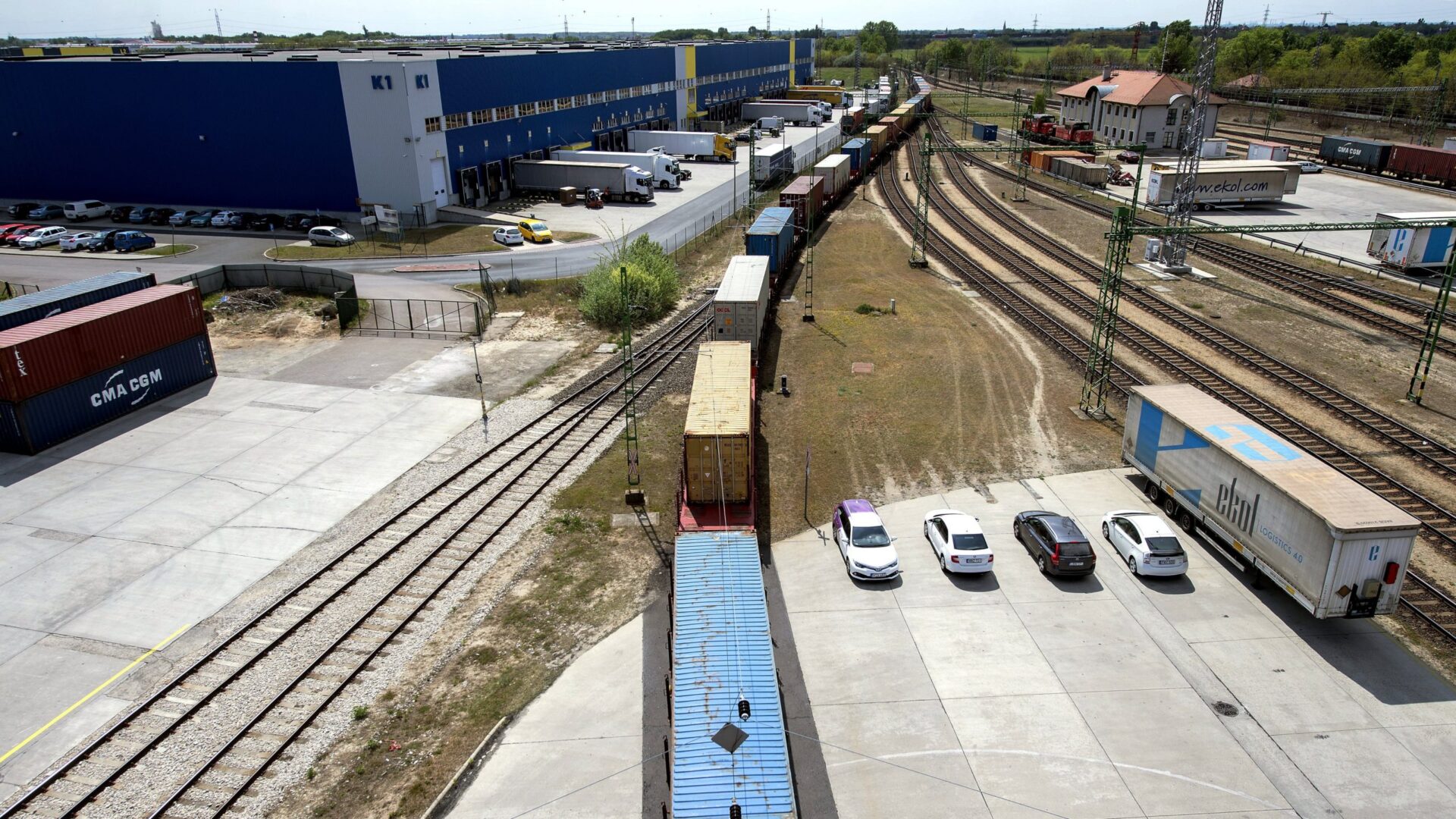The Middle Corridor – an alternative route from China to Europe that skirts Russia – has seen a massive increase in freight this year.
Russia’s ill-considered invasion of Ukraine is an ill wind that blows no good.
Kazakhstan has nevertheless spied an opportunity in the geopolitical shift precipitated by Moscow’s military campaign.
As countries in the West – in Europe in particular – scan the horizon for alternative routes through which to bring in imports from the east, Kazakhstan is emerging as an important player.
When goods are dispatched westward from China, they are increasingly doing so along the Trans-Caspian International Transport Route, or the Middle Corridor, as it is also known. The route also entails crossing the Caspian Sea, loading goods onto trains and trucks in Azerbaijan and sending them onward to Georgia and Turkey.
In the first nine months of 2022, the volume of goods transiting along the Middle Corridor almost tripled as compared to the same period in 2021. Kazakhstan increased the amount of its own exports along this path eightfold, according to the association of the Trans-Caspian International Transport Route, or TITR.
Authorities in Astana are hopeful this trend will persist.
“Amid the reformatting of global supply chains, the role of the Caspian Sea has grown dramatically,” President Kassym-Jomart Tokayev said an election stump rally in the Caspian port city of Aktau on November 7. “Given the current situation on world markets, the further development of the trans-Caspian route is of particular importance.”
Speaking a few days earlier in a meeting with foreign diplomats, Tokayev noted that more than 80 percent of overland transit traffic from China to Europe passes through Kazakhstan. Further developing the region’s transport connectivity could contribute to around 15 percent in aggregate growth to the economies of Central Asia, he said, citing a World Bank forecast.
This is all easier said than done, though.
Moving cargo flows now reliant on Russia further to the south is at present strongly constrained by limited capacity of key infrastructure like railways, seaports, transshipment hubs and roads. The problem affects not just Kazakhstan, but other countries along the Middle Corridor too.
In an interview with Eurasianet, Gaidar Abdikerimov, the secretary-general of the TITR association, described limitations in the infrastructure of Azerbaijan and Georgia as the route’s main “bottleneck.” The lack of locations at which to load and unload cargo ships and congestion along train routes cause chronic delays, he said.
“Transit infrastructure in Kazakhstan is generally in better condition and more orderly than in the South Caucasus. But we have our own problems: namely, the insufficient capacity of our two Caspian ports around the city of Aktau,” Abdikerimov said. “The volume of incoming cargo overall is more than two times the throughput capacity of our ports. Moreover, we don’t have our own fleet of ships.”
And more railroads and highways need to be built, Abdikerimov said.
Work in that direction is ongoing. Last month, Kazakhstan began adding capacity to an 800-kilometer stretch of railroad leading from the Chinese border to the center of the country. The government has described the project, which should be completed by the end of 2025, as one that will “contribute to the uninterrupted export of domestic products and the growth of the country’s transit potential.”
Ironing out the snarls will require careful coordination on technical issues between Middle Corridor countries.
On November 24-25, the heads of foreign ministries and ministries of transport from Azerbaijan, Georgia, Kazakhstan and Turkey met for talks in Aktau and signed off on a Roadmap 2022-2027 for the harmonized removal of bottlenecks. The projection is that $7.5 billion will be spent over five years by all the countries in that initiative in the interests of achieving a threefold increase in the current throughput.
Kazakhstan is setting its sights even higher. At a summit of heads of state of member nations of the Organization of Turkic States in November, Tokayev said his government intended to drum up $20 billion in investments by 2025 for the development of logistics and transportation infrastructure in his country.
Physical barriers are only part of the story.
The advantage of the Russia-dependent route is that any item being carried from, say, Guangzhou to Warsaw, only needs to cross two customs barriers. Kazakhstan, along with Belarus and Russia, are all members of the Eurasian Economic Union customs bloc. The Middle Corridor crosses many borders, each entailing time-consuming bureaucratic procedures.
Abdikerimov told Eurasianet that Azerbaijan, Georgia, Kazakhstan and Turkey are cognizant of the predicament and that they are working on easing the unhindered transit of goods across their shared borders by developing a single mechanism for the passage of cargo arriving from China.
“The countries of the trans-Caspian route understand that we all need this, that this is our common future,” he said.
None of this is to mean Kazakhstan is drifting away from Russia. Quite the opposite.
Speaking at the 18th Kazakhstan-Russian interregional cooperation forum in the Siberian city of Orenburg on November 28, Nurdaulet Kilybay, deputy governor of Kazakhstan’s Mangystau region, noted that the volume of container cargo traveling between Russia and China through Kazakhstan has increased fourfold year-on-year. At the same event, Alexander Polukhin, the head of the road and transportation ministry in Russia’s Orenburg region, set 2030 as the target date for the completion of infrastructure that would dramatically increase cargo turnover and cut travel times.
While officials in Kazakhstan see transit making a sizable contribution toward economic growth, there are few illusions any of this will enable the country to rid itself entirely of its current dependence on exports of raw materials like oil.
And when it comes to oil, there is only so much that can be done to circumvent Russia.
In 2021, Kazakhstan transported 54 million tons of oil, almost 80 percent of what it exported, through the Caspian Pipeline Consortium, or CPC, pipeline, most of which lies on Russian territory. On four occasions this year, operations at the CPC were interrupted – one time on seemingly spurious technical grounds that sparked suspicion of politically motivated meddling – causing Kazakhstan serious losses.
Starting in the New Year, Kazakhstan will begin sending its first batches of oil through the Middle Corridor, via the Baku-Tbilisi-Ceyhan pipeline. Initial annual projections see around 1.5 million tons of oil carried along this route. That is a trickle compared to what the CPC can manage.
Tokayev has instructed the government to work toward increasing that volume to 20 million tons, although he did not specify a timeframe. The widely shared assumption is that it needs to happen by 2030, as the giant Kashagan field nears peak production capacity.
Industry insiders are skeptical this can be achieved. In an interview with Eurasianet, Nurlan Zhumagulov, the head of the Union of Oilfield Services Companies, said many objective factors, including concerns about falling Caspian Sea levels, which will decrease the amount of oil tankers can carry, will make this a “difficult task.”
In any event, the CPC is a far cheaper option, said Zhumagulov. And capacity there is only growing. New pumping facilities mean that the pipeline will from next year be able to carry 83 million tons of oil, up from the current 67-million-ton ceiling.
“And so, for all the promising prospects for transit through Kazakhstan, the main engine of our economy will remain oil exports through Russia,” Zhumagulov said.
Source: Eur Asia Net










